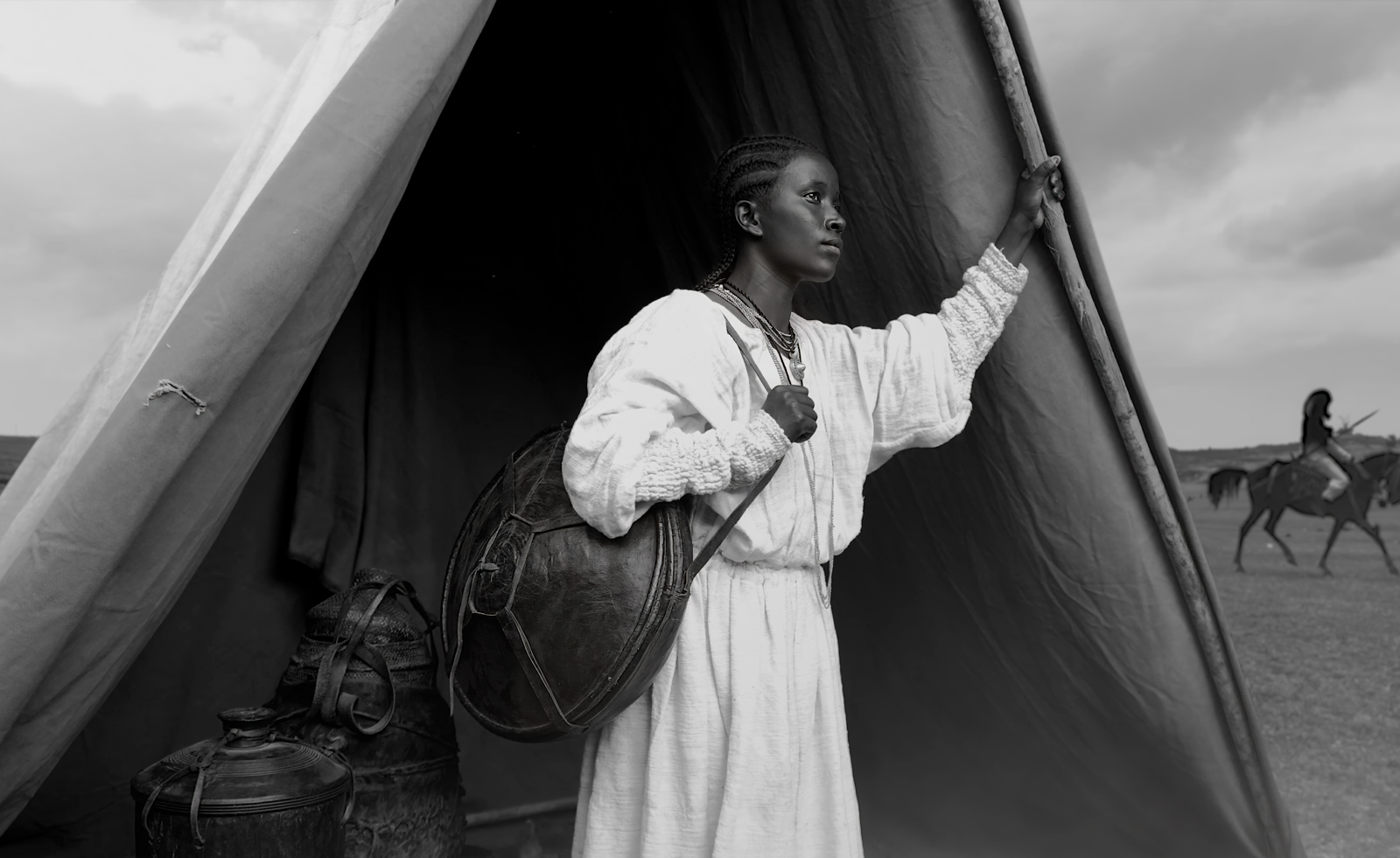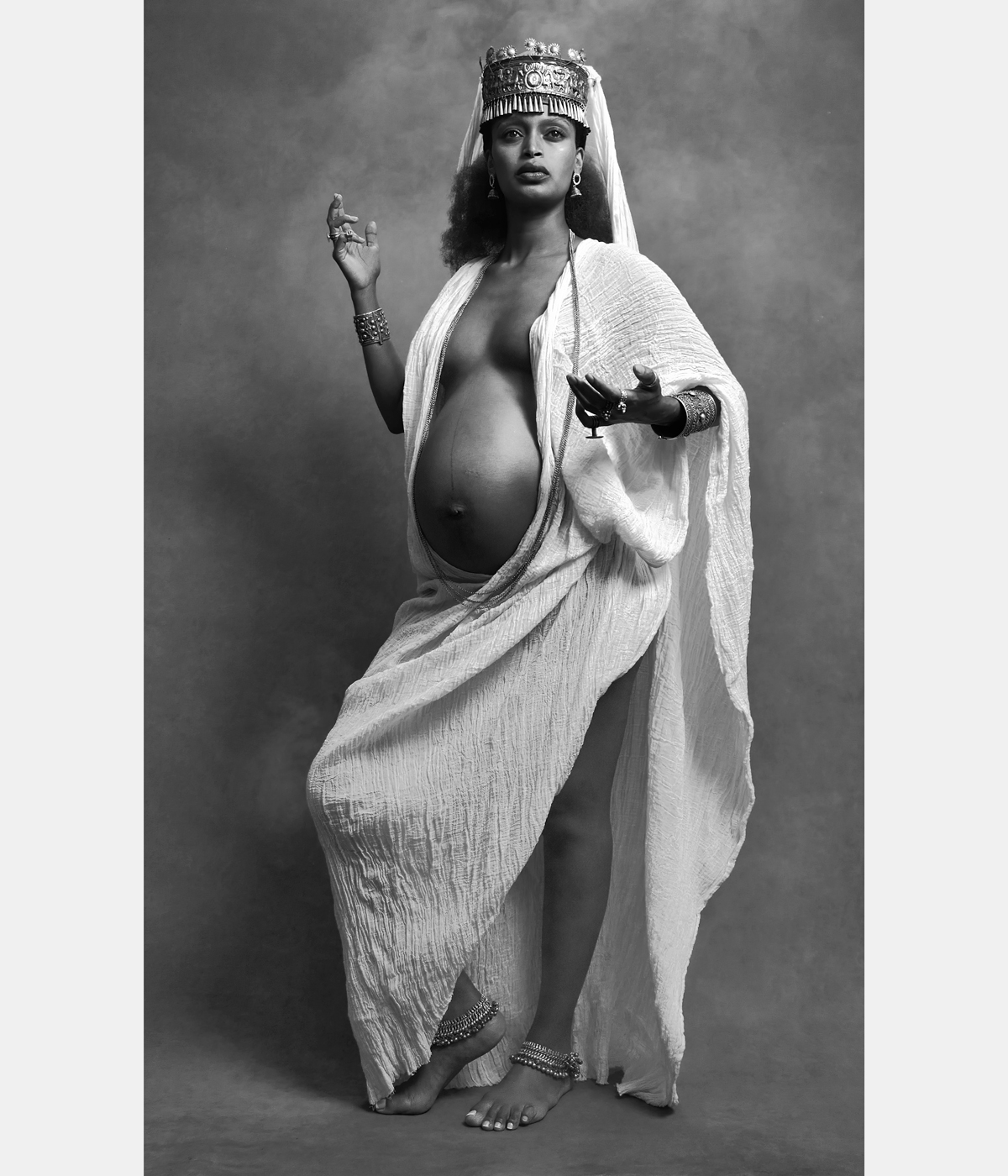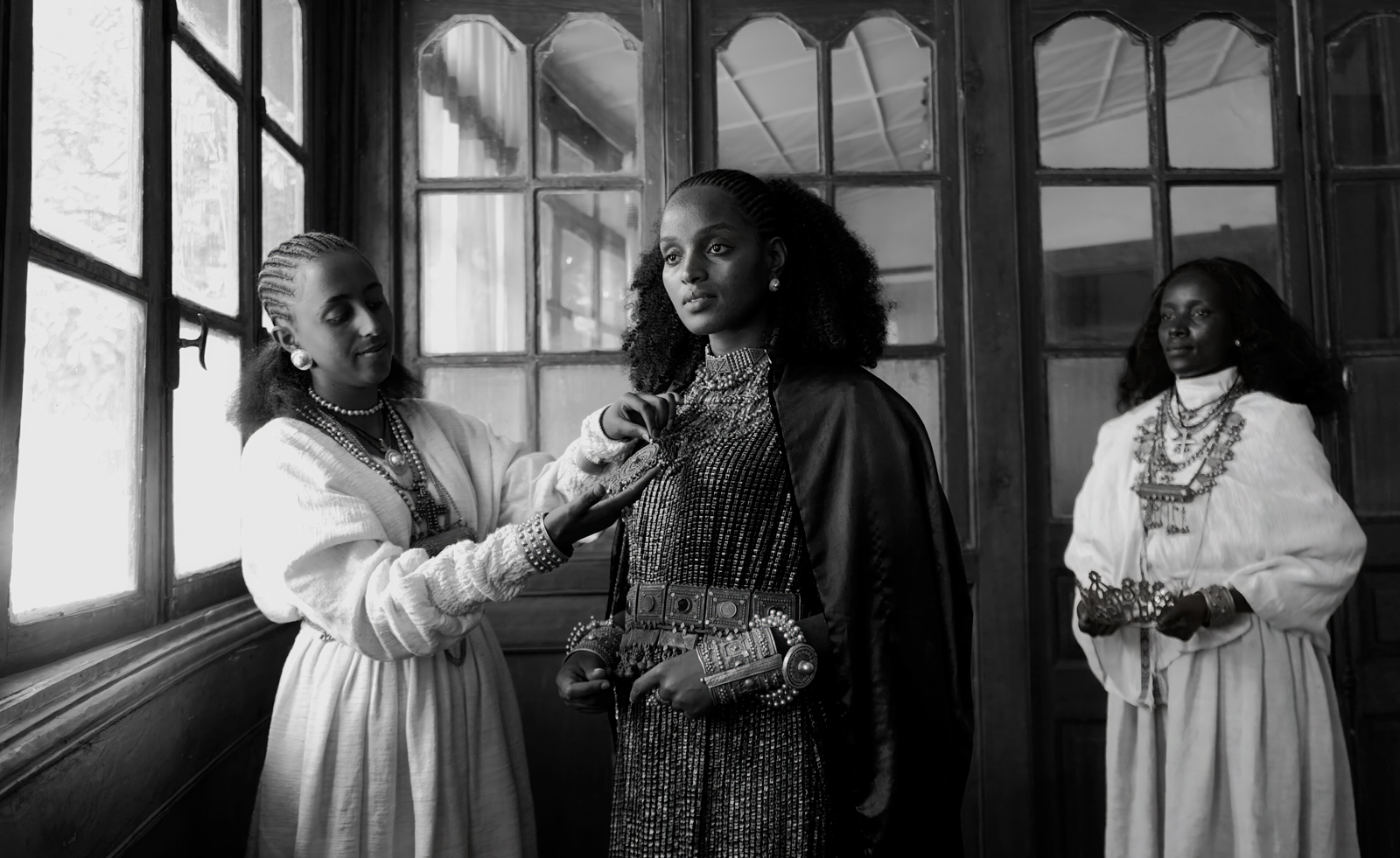
The Yatreda ያጥሬዳ collective, composed of a family of six creatives, wants to put a spotlight on Ethiopia, championing the stories of fallen empires, mythology, warriors who conquered, of forgetting and new cultures, religion and languages. And it does so through monochromatic motion portraits and NFTs.
Yatreda’s origin began with a dream. The creative director Kiya Tadele had always wanted to make a movie about the Adwa victory, the 1896 events that saw Ethiopians’ victory over Italian colonial forces. Over four years, the collective has created multiple projects including ‘Kingdom of Ethiopia’, one that captures and celebrates Ethiopian kings, warriors and kingdom; and ‘Strong hair’, which celebrates the beauty of Ethiopian hairstyles in 100 motion portraits. The collective's most recent project, ‘Abyssinian Queen’, opened at the Toledo Museum of Art in Ohio, USA, and is an appreciation of Ethiopian oral history, based on the story of a queen who is carried by her own people. The project was made during a residency at the Toledo Museum and features a 1,700-year history of artworks from Ethiopia.
Here, Wallpaper* chats with Kiya Tadele, creative director of Yatreda ያጥሬዳ, about the collective, celebrating amazing stories of Ethiopia through motion portraits, and ‘Abyssinian Queen’.

Wallpaper*: Where does the story of Yatreda ያጥሬዳ begin?
Kiya Tadele: During my childhood days, we lived in front of an Ethiopian Tewahedo church with a little theatre stage within the church compound. My brother and sisters would write little scripts, hoping they would perform what we wrote. We listened to radio dramas where there is only audio, so we always visualised the characters in our imaginations. We didn’t see them on TV, just inside our dreams. So, we would entertain ourselves by talking about the characters as a family. As I grew older, I always saw myself in a different place than in our little countryside. When I was 18, I moved to our capital city Addis Ababa and began modelling school and photography school. I began to understand the artist's life but wasn’t fully satisfied being a part of other people’s creations only. I began to work with local photographers and international photographers, doing anything for productions, including the lighting department. I met my husband and we worked all over Ethiopia together. I would support him and at the same time learn and exchange a lot of knowledge.
W: Why was it so important for you as a family to document century-long stories about Ethiopia?
KT: Ethiopian stories can be really hard to find. Many are lost to time. I want to preserve what I know, what I learned from my mother, so that our future generations can continue the tradition.
W: How would you describe your creative journey over the years?
KT: My creative journey has been growing and growing over the years. Originally, I only worked with my family members, but working with Toledo Museum of Art required engaging with a lot of people because it’s a huge institution. To make a decision, you can have a meeting with many people. This whole experience really helped me boost my confidence, explain my ideas more clearly in English, and become more comfortable doing public speaking. I learned a lot about myself and it became very clear I could be more fruitful to the world after this experience and share everything I have inside.
W: Why was it important for you to use NFTs to document these stories?
KT: In my public speeches, I have been telling one modern proverb: ‘ብሎክቼን ዉድ ሀብታችን የሆነዉን ባህልየምናስቀምጥበት ካዝና ነው’. It means: ‘The blockchain is a vault for our cultural treasures.’ I really believe that. I love Yatreda’s work existing on a blockchain. Because that is like carving our legends into digital stone.
W: You mostly work in monochrome, why is that?
KT: Monochrome can give a much-needed layer in-between us, the viewer, and the [featured] character. Many are legends, or historical characters, so it is important to not notice the modern cast playing them. I want it to be about the fantasy character, or someone who lived long ago, not about recognising me or my family members in there. Of course, I would always consider doing colour artwork but for now this is the style I am in love with.
W: What inspired the project ‘Abyssinian Queen’?
KT: The inspiration is based on collective memory. This idea doesn’t come from a specific painting or existing photo, it comes from oral history. Abyssinian Queen is not a specific historical character, but based on a countryside folktale my sister and I would tell each other growing up. In this oral tradition, there's a queen who is carried by her people. It is a difficult task. The rule is that if anyone lets out a sigh from exhaustion, they might be punished. So, the people carrying her have a clever trick: they keep saying, ‘Don't say sigh out loud.’ But, in saying it, they're sneaking in a sigh. It's a playful way for them to follow the rule while secretly breaking it.
So this cute idea became the base for serious artwork. I first did a very rough sketch. Then my sister Roman painted another reference for me. In Roman’s painting, she multiplied the cast. Roman said, ‘If you make the queen carried by four people only, it reminds me of the rural stretcher-frame ambulance we had growing up, not a queen.’ So although it was a big challenge, I embraced this, and began to develop the other characters surrounding the queen in the composition. Her assistants and interpreters, her wise man who may be a negotiator between kingdoms, and her guards. I cast my cousin Yayu to play the queen. The others are other family members, friends, and neighbours.
W: What was the process of creating this project and how long did it take?
KT: We made the queen’s carrier by hand using wood and fabrics inspired by the Ethiopian Tewahedo Orthodox church. All the costumes and props are antiques or handmade. We actually shot the footage for ‘Abyssinian Queen’ twice because the first time we were not convinced it was as good as it could be. I changed some things around with the cast, and the second time we returned to the location, we made some magic.

W: How was the residency, is it still ongoing?
KT: The residency at Toledo Museum of Art is for all of 2024. It is aligned with the exhibition ‘Ethiopia at the Crossroads’, which features a 1,700-year history of artworks from Ethiopia. We are so proud to have five large-scale video artworks included in the museum exhibition. Beyond this, Yatreda also developed an immersive experience based around the Ethiopian coffee ceremony. In a collaboration with the hot glass shop at Toledo Museum of Art, we handcrafted glass cups following the traditional Ethiopian design. But like other Yatreda artworks, it is not only to replicate the past; we also added a futuristic element. Inside each glass, was an NFC chip with a unique link. Guests tapped their coffee cups to their phone and revealed a unique Coffee Proverb artwork. Those proverbs were gathered from me chatting with Toledo locals and comparing the American and Ethiopian coffee experience. One is about a fast-paced lifestyle, the other is about slowing down the world around us.
Yatreda also developed a physical artwork called the Queen’s Medallion. Together with our amazing curator Sophie Ong, we studied the ancient Aksumite and Roman coins included in ‘Ethiopia at the Crossroads’, and made a kind of ancient diplomatic passport out of bronze. The idea is the Abyssinian Queen is giving safe passage from Abyssinia to Toledo, and by carrying this, you will be safe on your journey. Part fantasy, part history. This medallion was filmed and turned into a video artwork available only to guests who visited the exhibition. The main point is to bring people into the museum, and inspire repeat visits. Our other responsibility is to onboard local people to web3.
W: Aside from Ethiopia, who and what has inspired your creative journey?
KT: Aside from being in Ethiopia, being a woman, and now a mother, that made my creativity go even further. Especially considering my time, everything is precious, every minute, every second has value. It makes me feel like I have to use any drip out of any idea that comes to my mind, because I know I have a little human growing, and that little human is going to be curious one day to learn about this world.
The Yatreda ያጥሬዳ collective's project ‘Abyssinian Queen' is at the Toledo Museum until 10 November 2024







